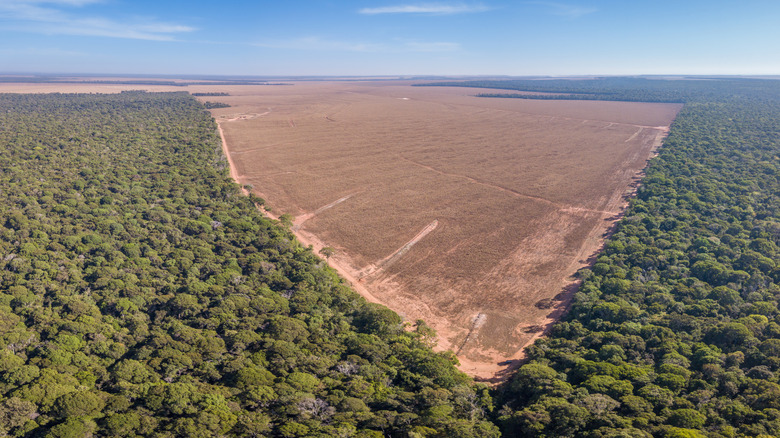Satellites Discovered A Surprisingly Simple Strategy To Combat Climate Change
Tropical forests are a haven for all kinds of species, but their dense trees and fertile soil also make them valuable for logging and agriculture. Local farmers, national corporations, and international conglomerates can all clash over access rights to the best land — bizarrely, even automaker Ford built a large-scale plantation in the jungle, although it was later abandoned. In many cases, once these plantations or cleared forests become abandoned, they're considered to be mostly useless. However, scientists have recently suggested that they could form part of a major strategy to combat climate change.
Research published in the journal Nature used satellite data to track tropical forest regeneration between 2000 and 2016. The authors found that the natural spread of these forests over time was significant, and that if left alone, there was a lot of land around the globe that could be reforested with only minimal management. Most of it was situated near existing forest, with the authors publishing a map that showed the potential for regeneration in much more detail than previous studies. Thanks to the satellite data, each cell of the map measured just 30m². Over half of this potential regrowth was concentrated in five countries: Brazil, China, Colombia, Indonesia, and Mexico.
Natural reforestation might require fewer resources than replanting trees, but it isn't entirely management-free. The study noted that fire suppression, the removal of invasive species, and the exclusion of grazing animals from the area would still be needed to maximise the chances of regrowth.
Forest can quickly regrow if the conditions are right
Natural regeneration is a particularly promising strategy to combat climate change because it's far more affordable than other reforestation techniques. Many of the areas identified as being best suited to reforestation are in lower-income countries with limited environmental protection budgets, where it simply isn't feasible to actively replant large areas of forest. Active replanting can also lead to less biodiverse forests, with planters sometimes favoring tree species with the highest future commercial value. This, in turn, leads to a greater chance of a forest being chopped down again when it matures.
The study acknowledges that the financial case for reforesting isn't always straightforward, but suggests that environmental protection schemes that reward landowners for protecting forests are potentially a way to encourage future reforesting schemes. Those schemes will now have additional data to predict which parcels of land are best suited to reforesting, thanks to the study.
Throughout their long history, satellites have been a useful tool for scientists looking to gather data from above. Over the years, their capabilities have improved dramatically, with the best spy satellite cameras able to keep track of individual vehicles and see details like stripes and sunroofs. Thankfully, satellites have also been used for much less nefarious reasons, and are a key tool in helping today's top researchers gain a better understanding of human impact on the natural world, and subsequently work out how best to mitigate some of that impact.

